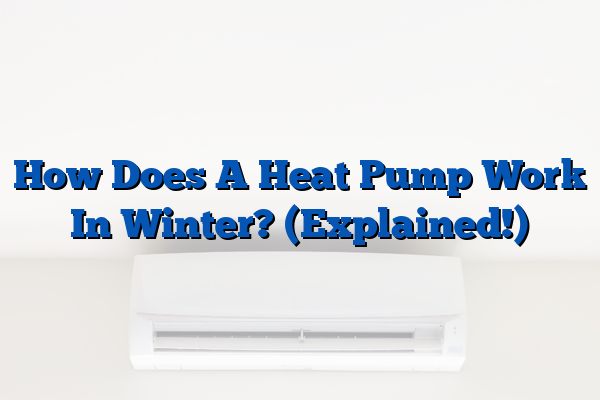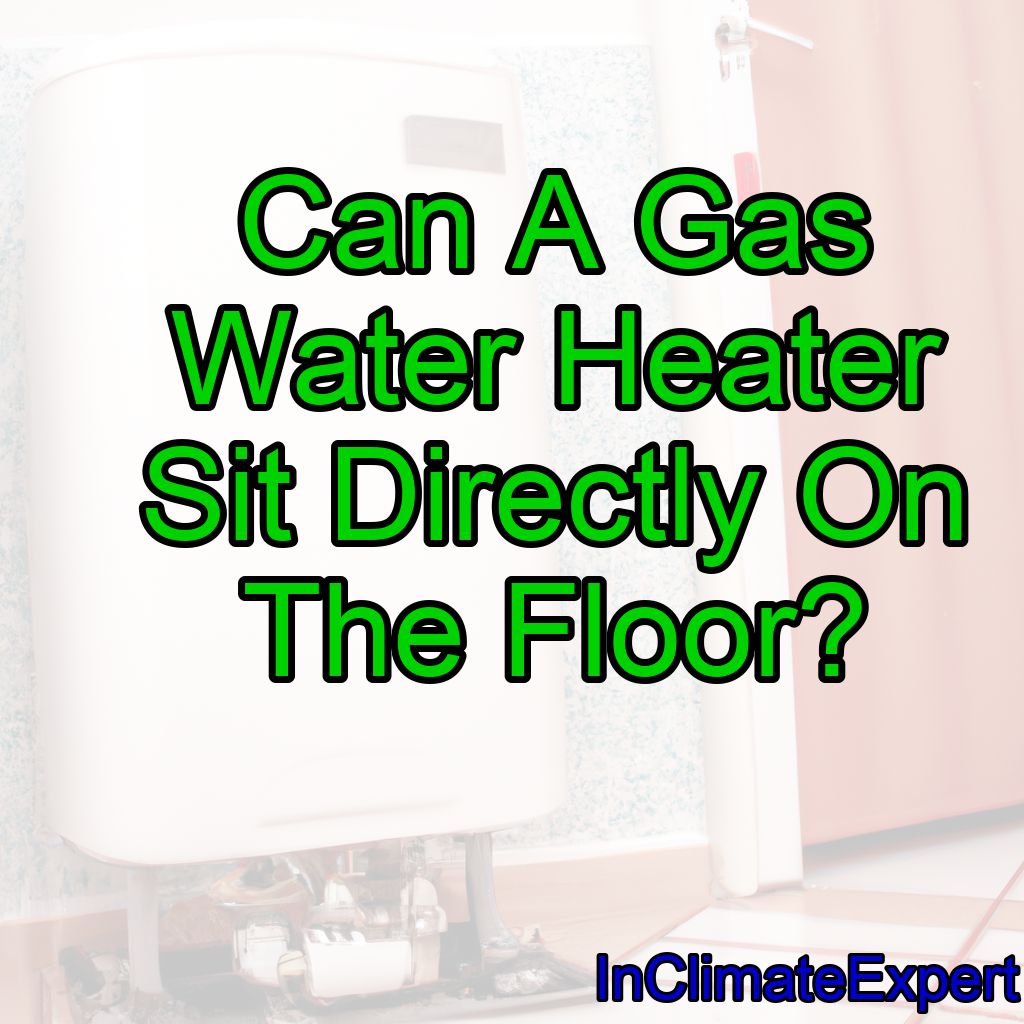As a heat pump specialist, I’m often asked how these systems work in wintertime. It’s an understandable question – after all, it can be tough to figure out how a system that was designed for cooling buildings during the hot summer months could possibly keep them warm during colder temperatures.
But don’t worry – I’m here to explain exactly how this process works!
In short, heat pumps are able to draw warmth from outside air and transfer it inside the building. This is accomplished through a complex series of processes involving liquid refrigerants and other components.
The result is that you get nice and cozy inside your home or office without having to use significantly more energy than if you were using traditional heating sources.
It may sound complicated at first glance, but trust me when I say that understanding the inner workings of a heat pump isn’t nearly as difficult as you think – once you have the basics down, operating one becomes second nature! In this article, we’ll take a deep dive into what makes heat pumps so effective in winter weather conditions and discuss why they’re becoming increasingly popular among homeowners throughout the country.
Overview Of Heat Pumps
Heat pumps are a lifesaver in winter, providing warmth and comfort in cold climates. As an experienced heat pump specialist, I’ve seen first-hand what they can do for homes and businesses all over the world.
In one instance, I visited a customer’s home during the depths of winter—the temperature was below zero outside! But thanks to their heat pump system running smoothly, inside it felt like springtime.
That’s because a heat pump works by transferring thermal energy from one location to another. This means that even when temperatures drop outside, you can still enjoy warm air indoors.
It also helps reduce electricity bills as compared to other traditional heating systems. And since no combustion takes place, there is no risk of dangerous exhaust gases or carbon monoxide poisoning too.
What really sets this technology apart is its ability to switch between cooling and heating modes with relative ease. With just the flick of a switch, you can turn your unit into either an air conditioner or heater depending on the weather conditions outside—all while keeping utility costs low.
So if you’re looking for reliable climate control throughout the year without breaking the bank, then consider investing in a quality heat pump system today! Now let’s take a closer look at how these remarkable devices actually work…
Components Of A Heat Pump System
Heat pumps are composed of many components, but at the heart of any system is a compressor. This component works similarly to an air conditioner’s compressor in that it circulates refrigerant through the heat pump loop and helps move heat from one location to another.
The other major component is the evaporator coil which absorbs warm air from indoors and transfers it outside. Additionally, there are several auxiliary parts such as expansion valves, filters, blower motors, etc., which all work together to keep a heat pump running efficiently.
The most important factor when considering how a heat pump will perform during winter months is its capacity for reversing flow. In colder climates this means that instead of moving hot air out of your home like it does during summertime, the compressor will reverse direction and take cold outdoor air and transfer it into your living space – warming up your house on chilly days! Furthermore, some models come equipped with electric heating elements or supplemental gas furnaces which can kick-in if temperatures get too low outside.
These additional features ensure consistent comfort year round while also helping reduce energy bills by relying less on conventional heating sources such as natural gas or electricity. By understanding these core components and their roles within the system you can make more informed decisions regarding whether installing a heat pump would be beneficial for your particular climate conditions.
With this knowledge in hand we now turn our attention to exploring the benefits of using a heat pump in winter months.
Benefits Of Heat Pumps In Winter
Heat pumps are an excellent way to heat your home in the winter months. Heat pumps work by transferring heat from one area to another, so they can be used even when temperatures get below freezing outside.
This means that you don’t have to worry about running out of fuel for a furnace or having to pay expensive utility bills; instead, you’re using renewable energy sources like air and ground heat. Plus, since a heat pump uses less energy than typical heating systems, it’s much more efficient and cost-effective over time.
Furthermore, with regular maintenance and care, a heat pump will last many years without needing any major repairs.
The cold weather doesn’t mean you have to suffer through discomfort either – a well-maintained system is capable of producing warm air year round. And because it works on electricity rather than gas or oil, there’s no need to worry about carbon monoxide emissions that could potentially be hazardous indoors.
And if you invest in an ENERGY STAR certified model, you’ll be able to take advantage of additional tax credits and other rebates which further reduce the cost of ownership.
In terms of comfort level too, a properly installed heat pump ensures that each room has consistent temperature throughout the house; this helps minimize drafts from windows while also reducing humidity levels inside the home. With all these benefits combined, it’s easy to see why so many homeowners choose a heat pump as their preferred method for keeping their homes comfortable during colder seasons.
Seamlessly moving onto how best to maximize efficiency…
How To Maximize Efficiency Of A Heat Pump In Winter
In winter, the efficiency of a heat pump is especially important. To get the most out of your system, you need to understand how it works and what measures can be taken to maximize its performance in cold weather.
As a heat pump specialist, I’ll explain exactly how this type of heating system operates during colder months and offer some tips for getting maximum efficiency from your unit.
When temperatures outside drop below freezing point, a switch automatically triggers the reversing valve inside the heat pump’s compressor. This reverses the flow of refrigerant through the evaporator coil so that instead of absorbing warm air from indoors, it extracts warmth from outside air or ground source energy.
The heated liquid then moves on to the condenser where it warms up indoor air before being released into living spaces.
To ensure maximum efficiency when running a heat pump during wintertime, make sure all filters are clean and free from dust and debris. Additionally, check that any outdoor coils have been cleared away of snow as they help absorb more heat while also allowing cooler air to pass over them efficiently.
You should also consider installing insulation around pipes leading outdoors which will prevent frozen water lines due to low temperatures causing damage to equipment. Finally, adding covers onto exposed areas such as windows will aid in trapping warmer air indoors reducing strain put on the system by having to work harder than necessary against cold external conditions.
By following these simple steps and keeping an eye on maintenance requirements throughout winter months you can rest assured knowing your home is well-heated without wasting energy or money!
Conclusion
In conclusion, heat pumps are an incredibly efficient and reliable way to stay comfortable during the winter. With components like a compressor, expansion valve, evaporator coil, condenser coil and fan motor, they work by moving heat from one area to another.
Heat pumps also offer numerous benefits in the wintertime such as lower energy bills compared to traditional heating systems.
To ensure that your heat pump is running as efficiently as possible during colder months, you should make sure it’s properly serviced and maintained. This includes cleaning or replacing air filters regularly and inspecting for any leaks or blockages in the system.
Additionally, adding insulation around the unit can help keep warm air inside and reduce energy costs even further.
Finally, don’t forget about regular professional maintenance—it’s truly worth its weight in gold when it comes to keeping your heat pump working optimally throughout the year! So if you want to enjoy maximum comfort while saving on energy costs this winter season, investing in a quality heat pump is definitely ‘the way to go’!




